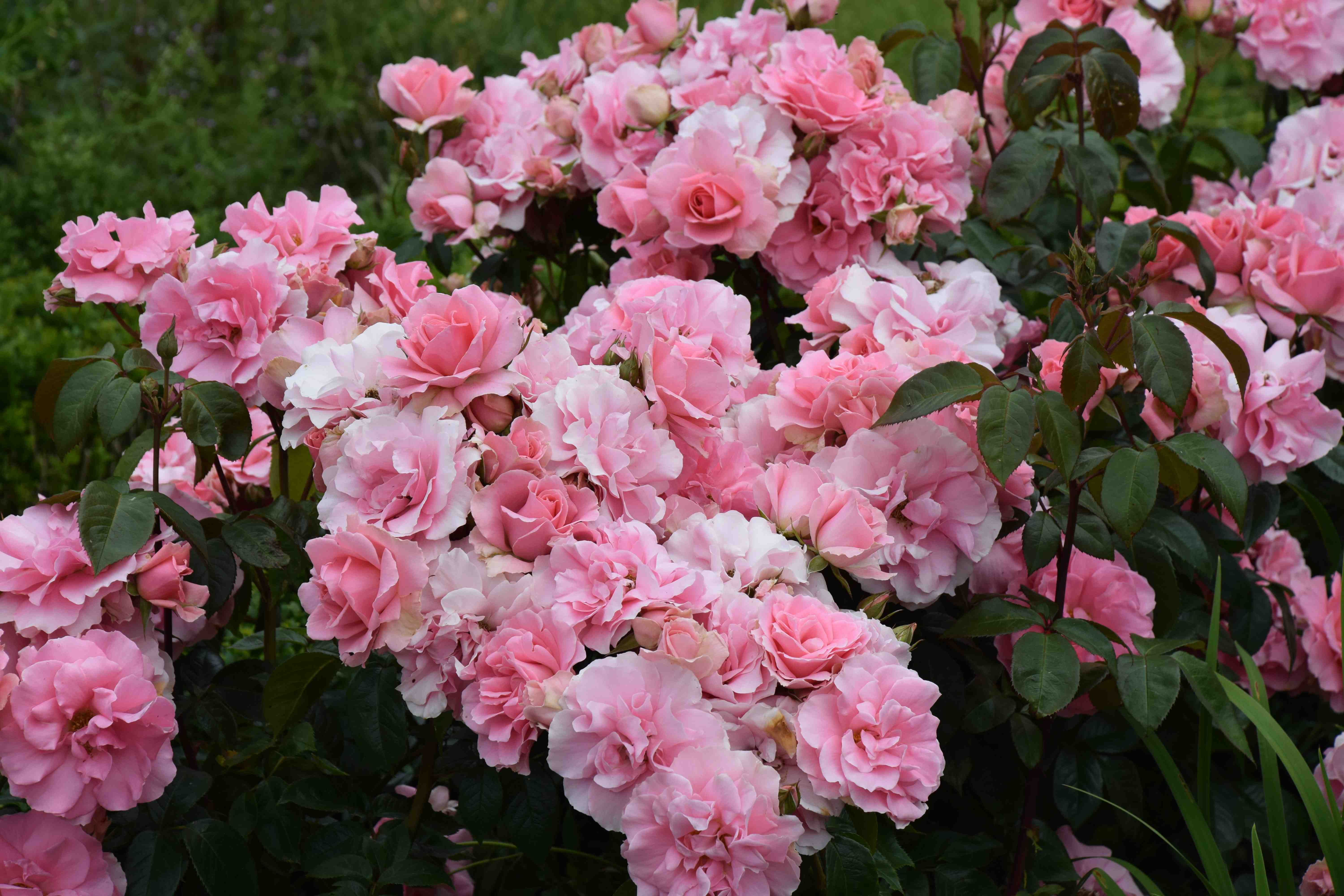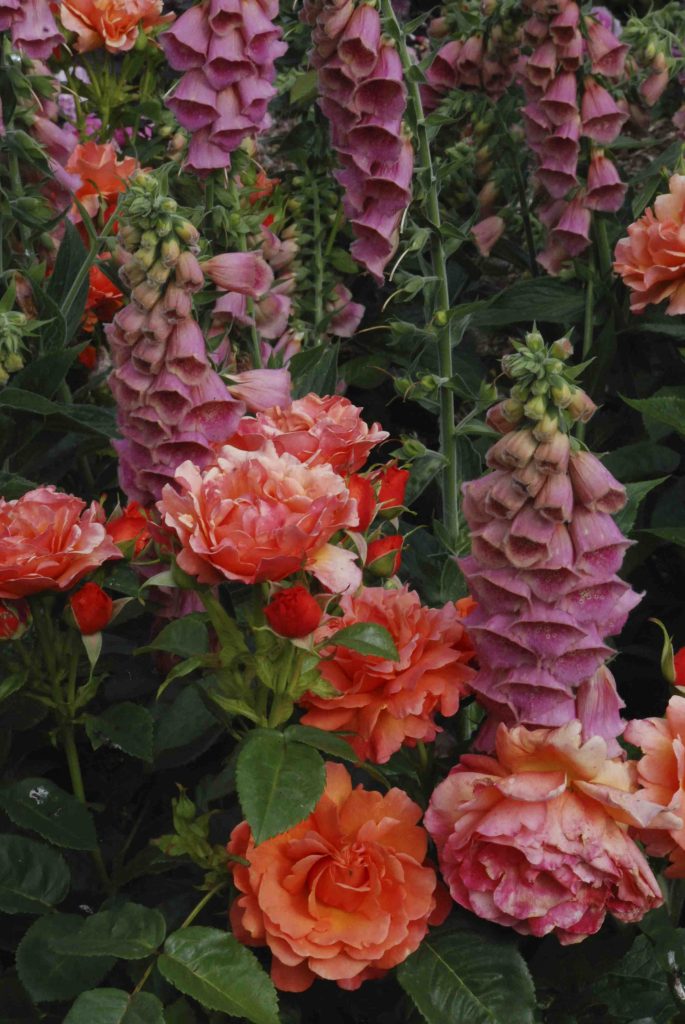
With RHS Chelsea Flower Show next week the whole nation will be thinking about their gardens! Of course, some of us are thinking about our garden all year. Chelsea always means the introduction of new roses.
I can’t wait for my roses to be in full bloom. A few are already opening and I am enjoying their perfume but it will be a few more weeks before I can really enjoy them in their full glory.
Every garden should have some roses. I know that some people complain that roses have thorns, and that they need pruning and have a few problems. But no other shrubs flower for so long, throughout summer and, if you are careful with your choices, many are resistant to disease.
Roses grow best in a sunny spot, and in a rich soil. Roses are greedy but they are also lazy, and they like you to bring the nutrients to them! So they benefit from regular feeding. You should apply a rose fertiliser now, if you have not fed them yet this spring, and then again in July, after the first flush of bloom. A well-fed rose is likely to be healthy and much more beautiful.
Even so, there are a few problems you may experience. The first is greenfly. These little sap-sucking pests cluster on the growing tips of the shoots. If they are present in large numbers they can cause distortion or even kill the buds. But there are lots of creatures that like to eat them, including ladybirds and blue tits. I never spray greenfly. I rub them off if there are lots but in most cases they get gobbled up by wildlife.
The biggest problem in most gardens is blackspot.
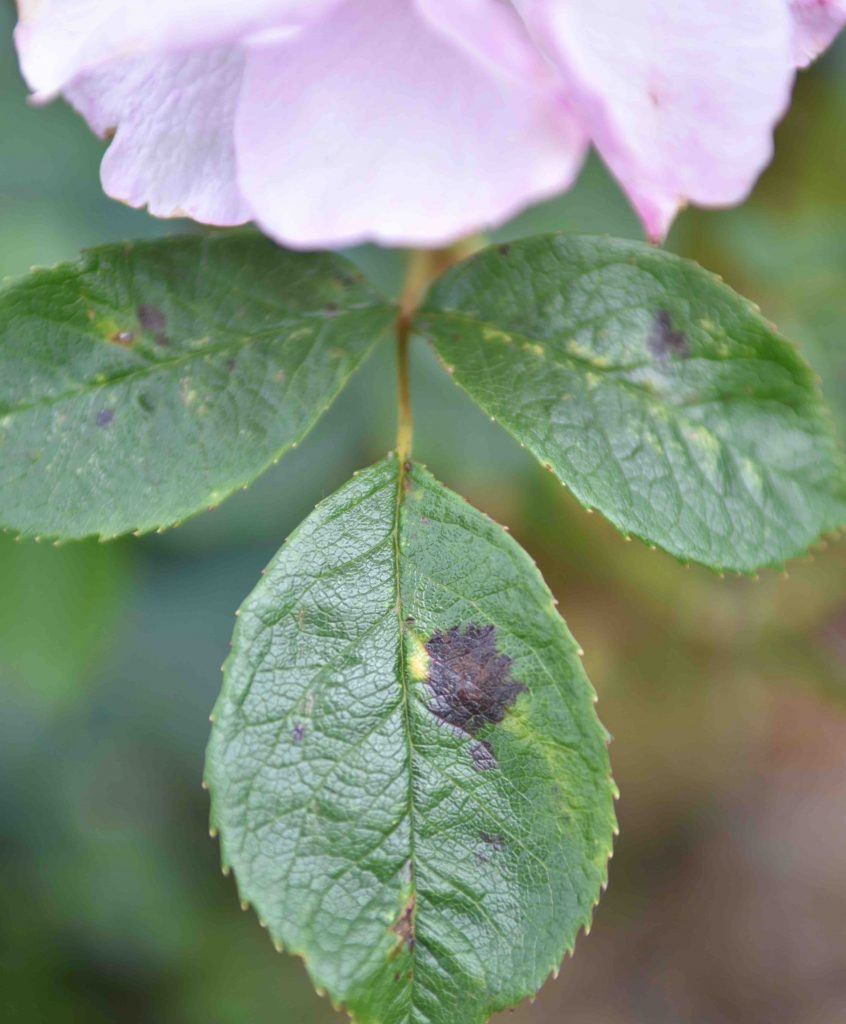
This is a fungal disease and the spores land on the leaves, invade the tissue and cause the obvious black spots. Later the leaf will go yellow and drop off. This can defoliate the bush and weaken it. Some roses are more resistant but most are prone to the problem which is always worse if the rose bush is already struggling. A lack of fertiliser, severe drought or mulching with bark all encourage blackspot.
I don’t spray in the garden much but I do spray with a fungicide (not a combined fungicide and insecticide) to prevent blackspot. Note the use of the word ‘Prevent’. Once blackspot (or mildew or rust) is on the leaves you can’t get rid of it. You need to spray as soon as you see the first signs of damage. If you only have a few bushes it is best to buy a ready-to-use product so you can nip out and spray your roses every two or three weeks to keep them clean and healthy.
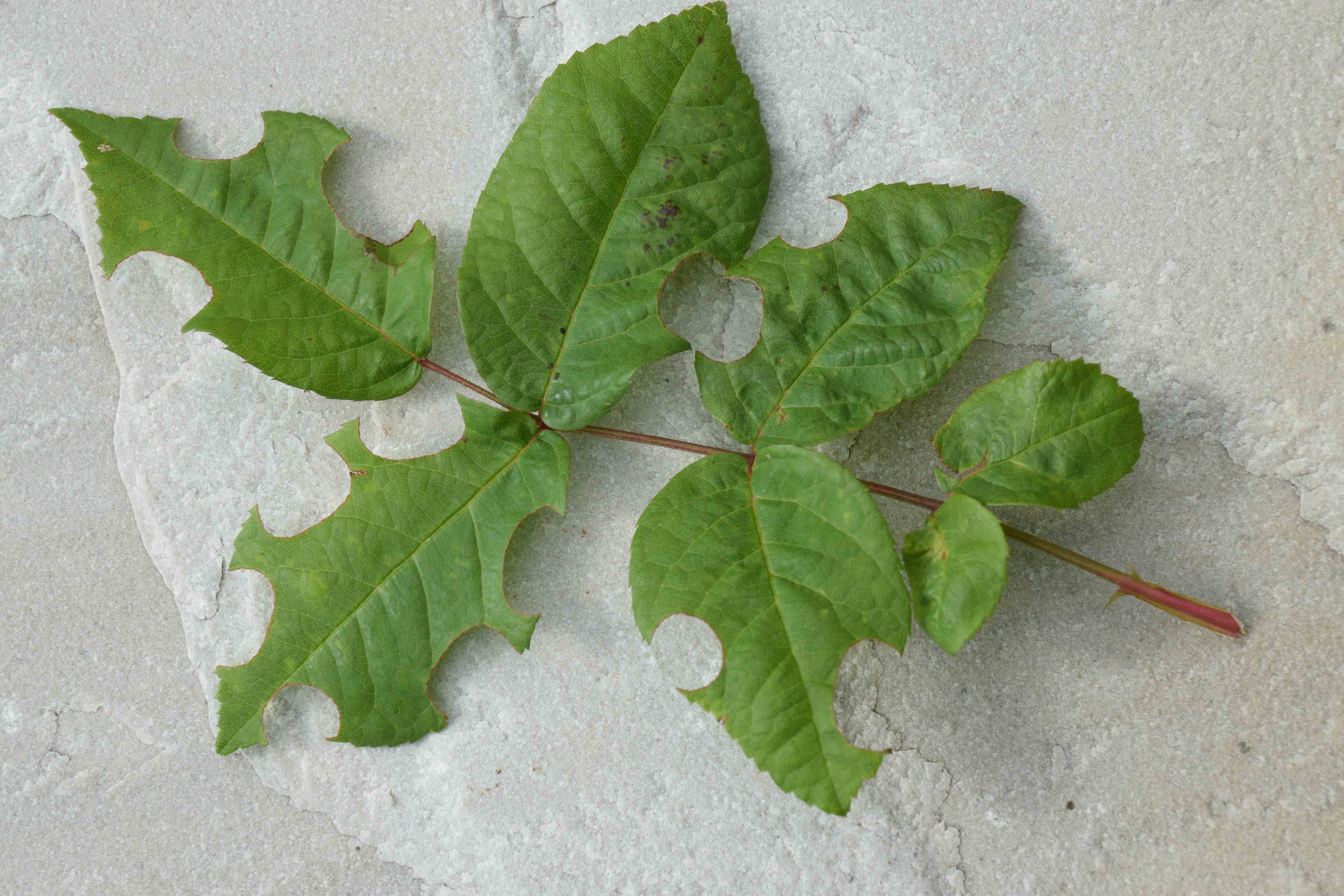
Leafcutter bees cut out circles from the leaves and the damage can look alarming. But you really should tolerate the damage – it won’t harm the roses and the bees are collecting the pieces of leaf to line their egg cases. I am always pleased to see the marks on my roses, knowing I am helping these skilful, hardworking insects.
The same goes for robin’s pinchions which you may find on your roses. These are produced by the plant in reaction to an egg being laid in the stem or leaf by a tiny solitary wasp. The grub lives in the furry structure until it hatches out in autumn. Again, I am pleased to see them in the garden.
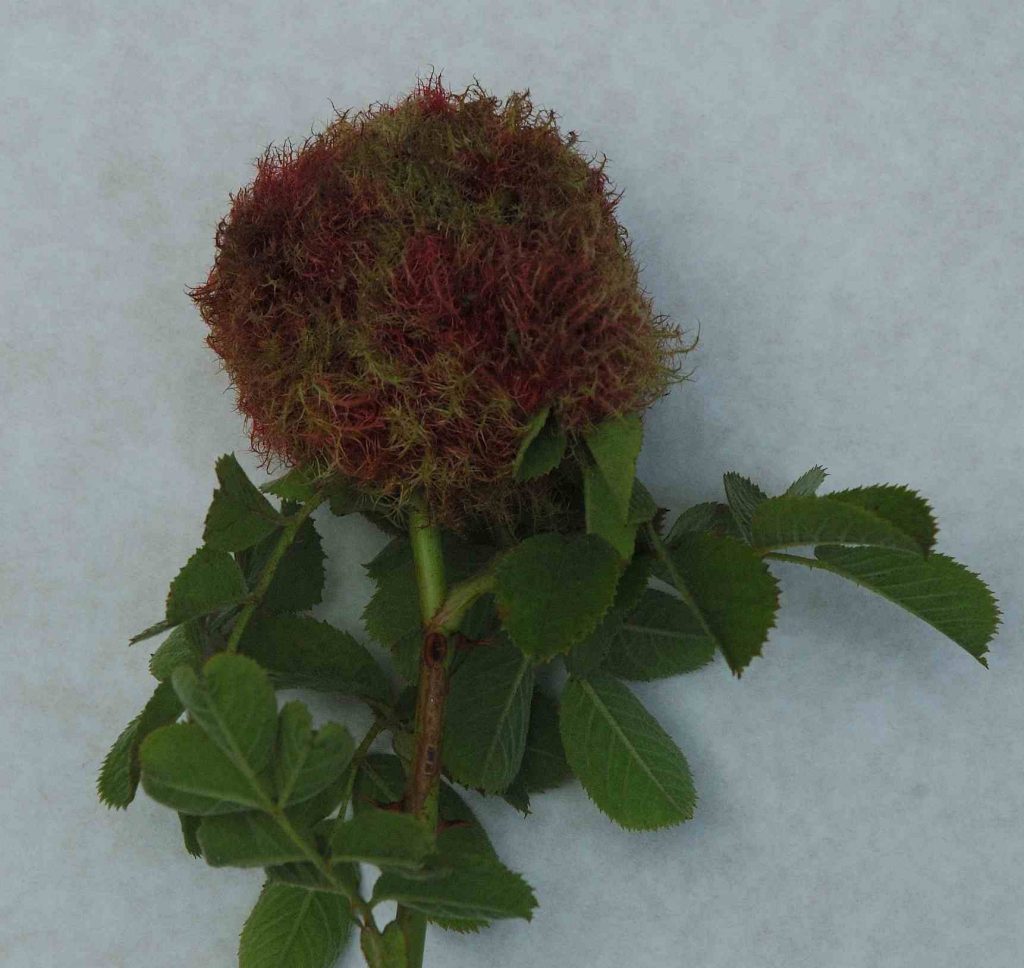
Another curiosity is when the centre of the flower becomes leafy. Some old roses naturally have a ‘button’ centre but any rose can sometimes produce a strange leafy centre. This is nothing to worry about and it happens from time to time.
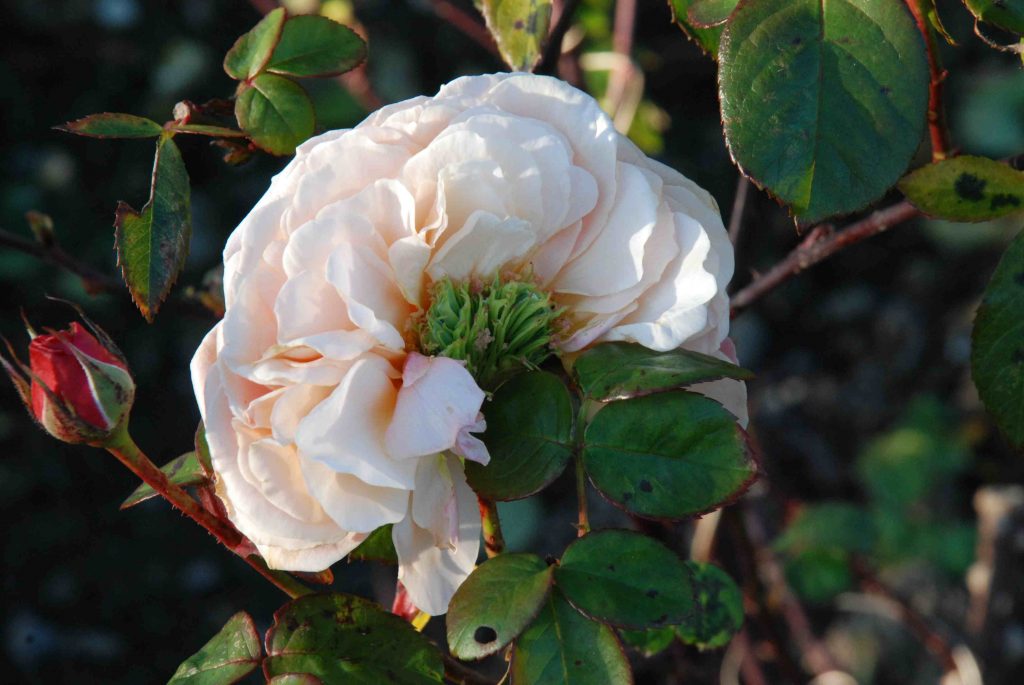
In wet weather, and sometimes extreme hot weather, some roses are vulnerable to ‘balling’. This is where the outer petals stick together and prevent the flowers from opening. There is not much you can do about this apart from wait for some better weather. And to cut off the old flowers.
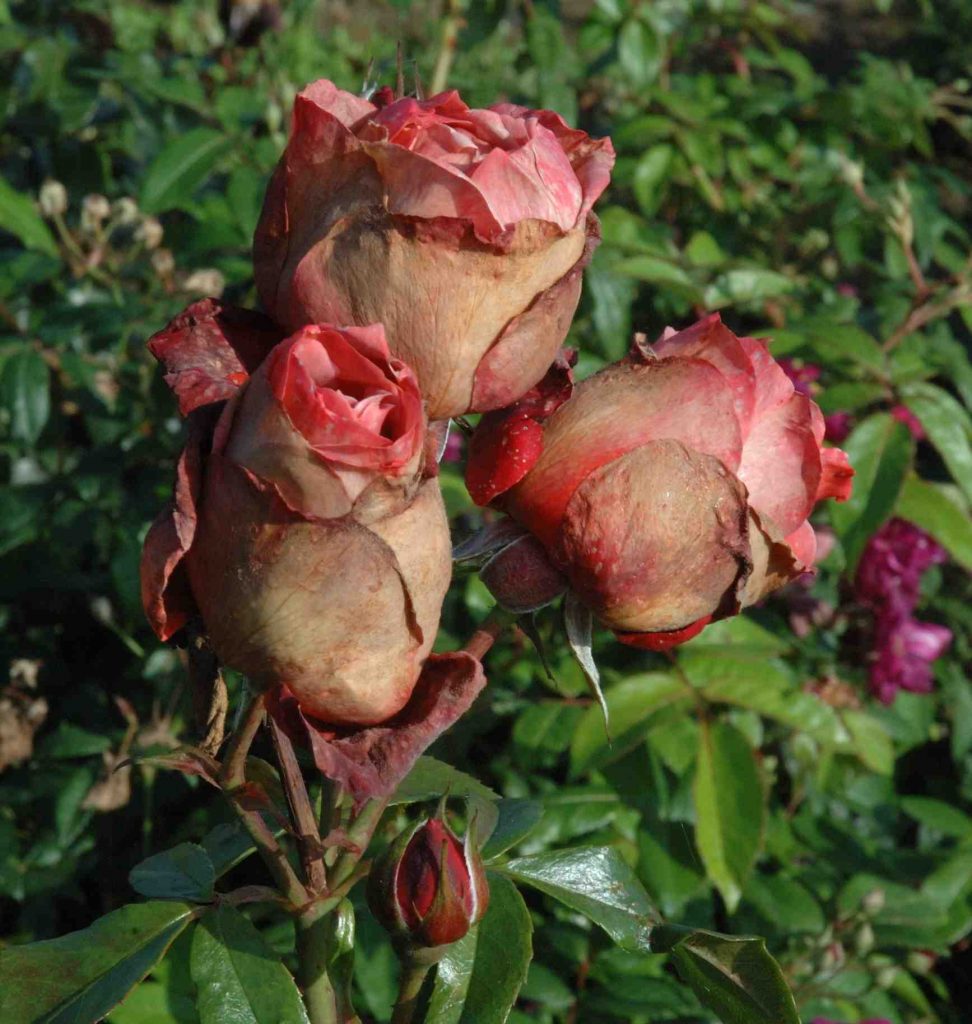
It is important to deadhead your roses and remove the old flowers. This not only keeps them tidy, it prevents seed pods from forming and so encourages the rose bush to produce more flowers. Prune off the old flowers back to a good leaf.
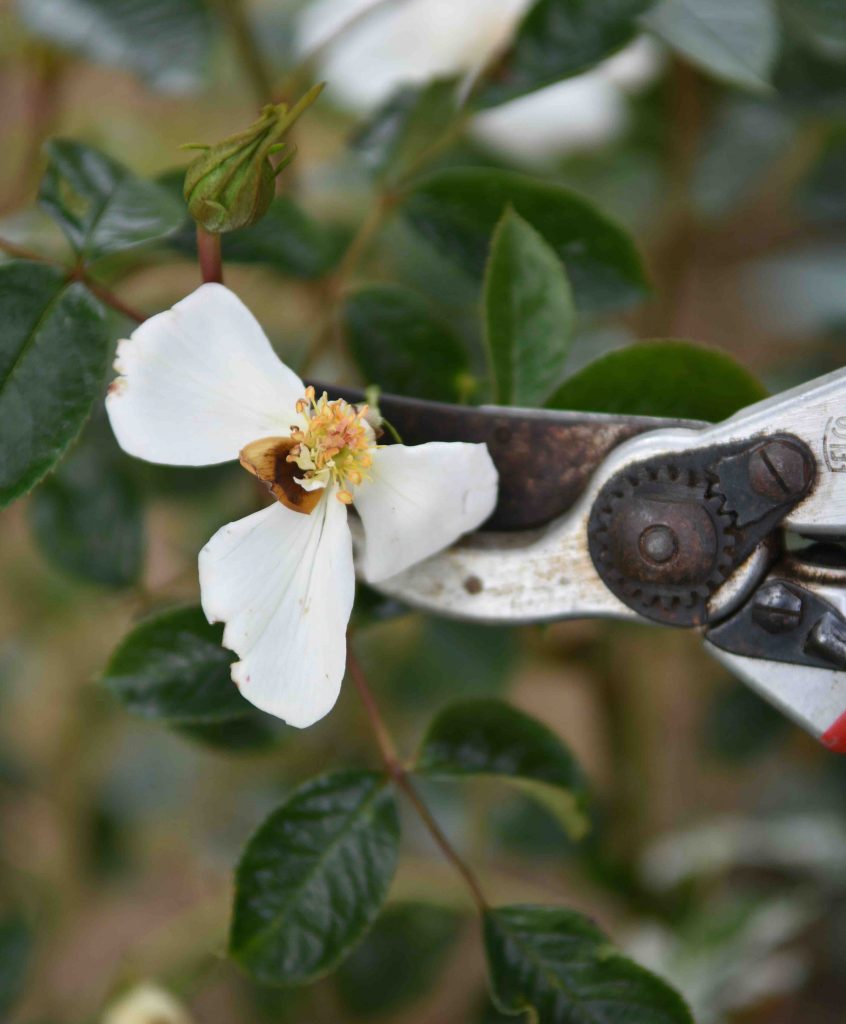
While you are deadheading the roses, take time to look for suckers coming from the base and remove them. You can usually recognise these because the leaves will be different. The stems will also look different and probably be very vigorous too.
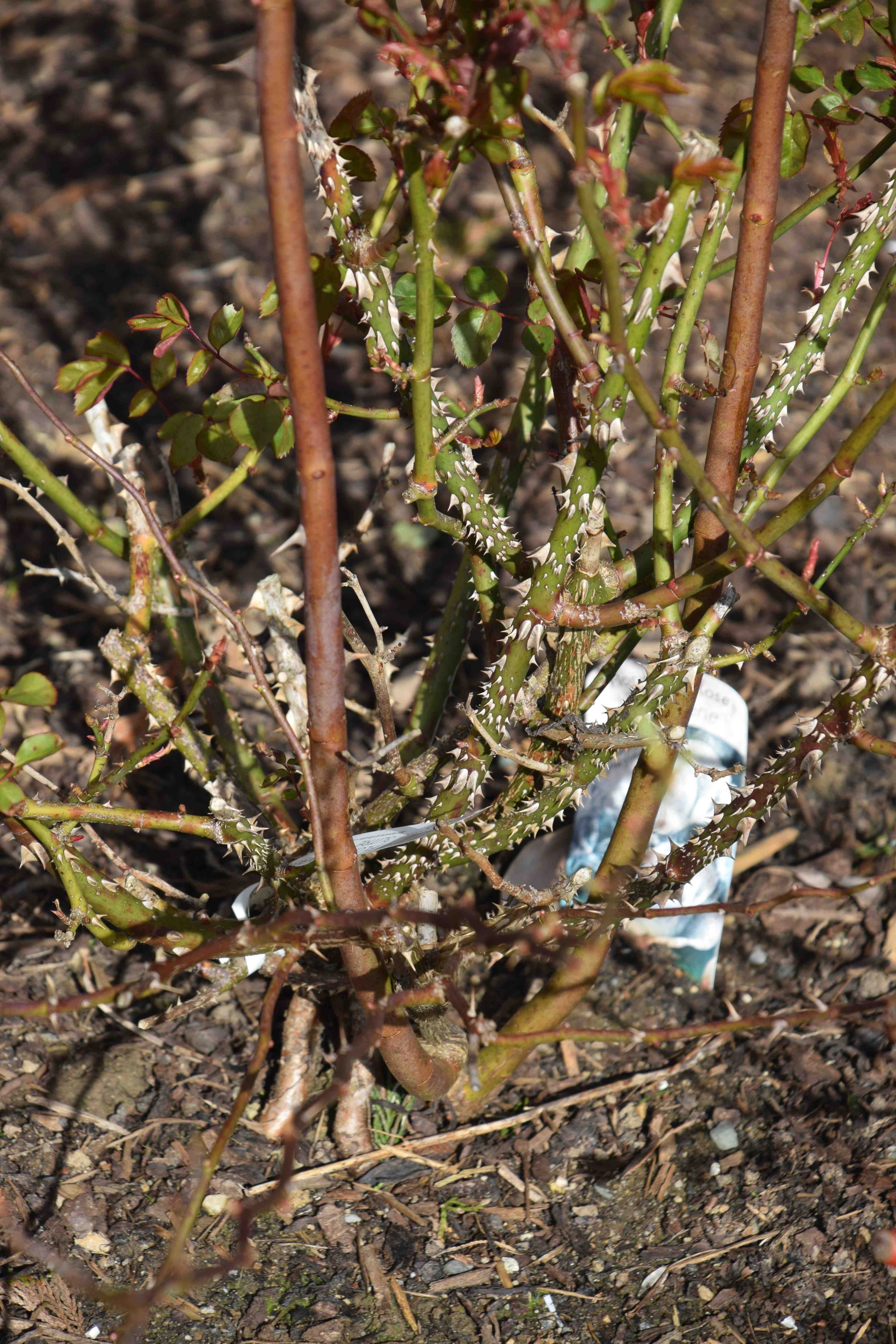
This all sounds like a lot of work but roses really are worth the effort and are set to fill our gardens with colour and fragrance all summer.
